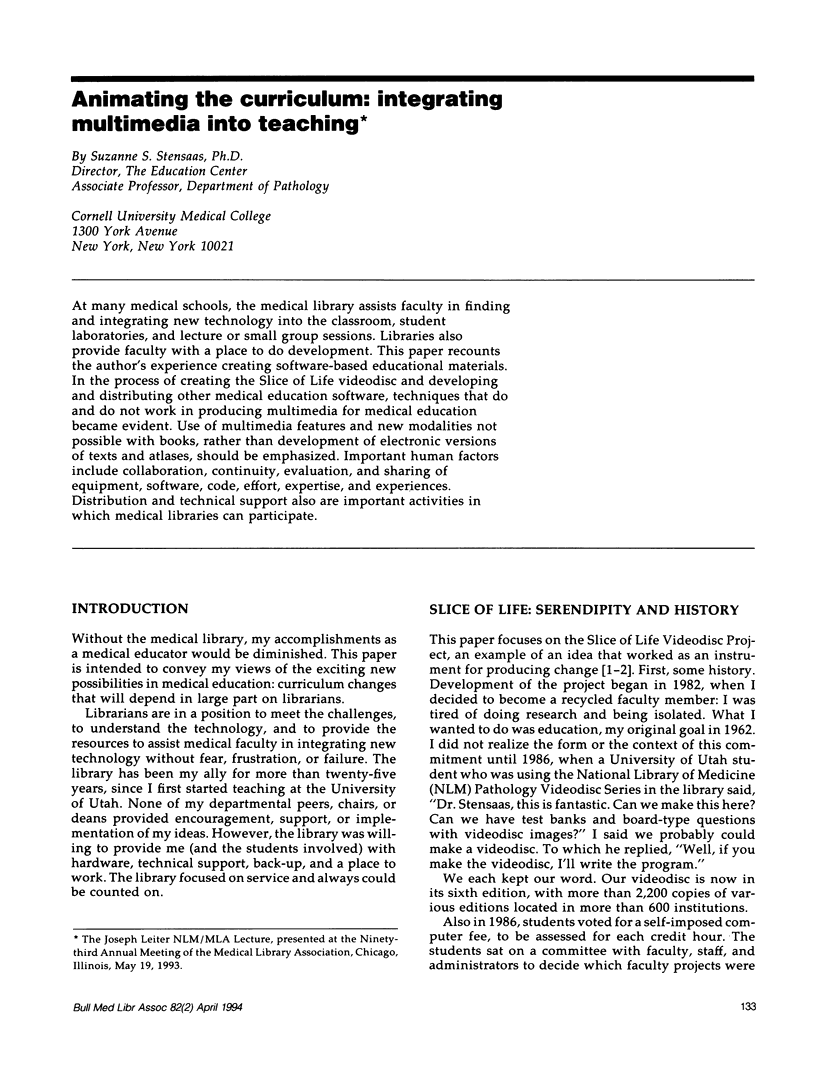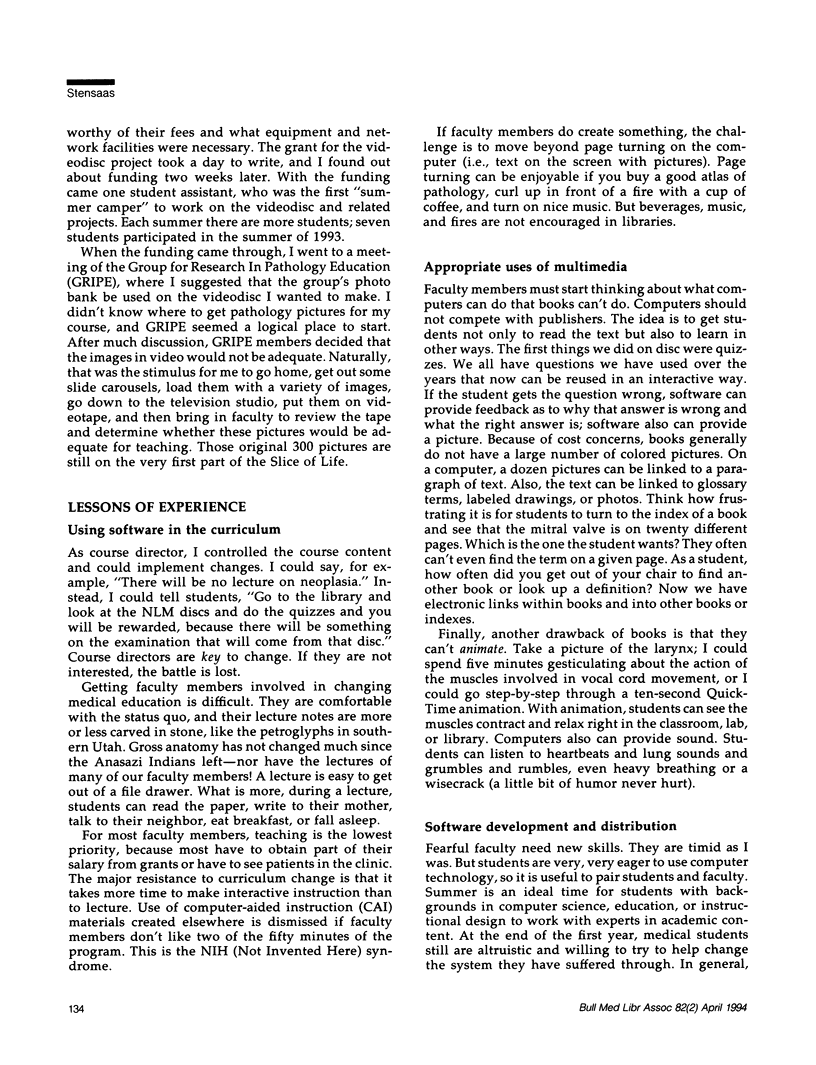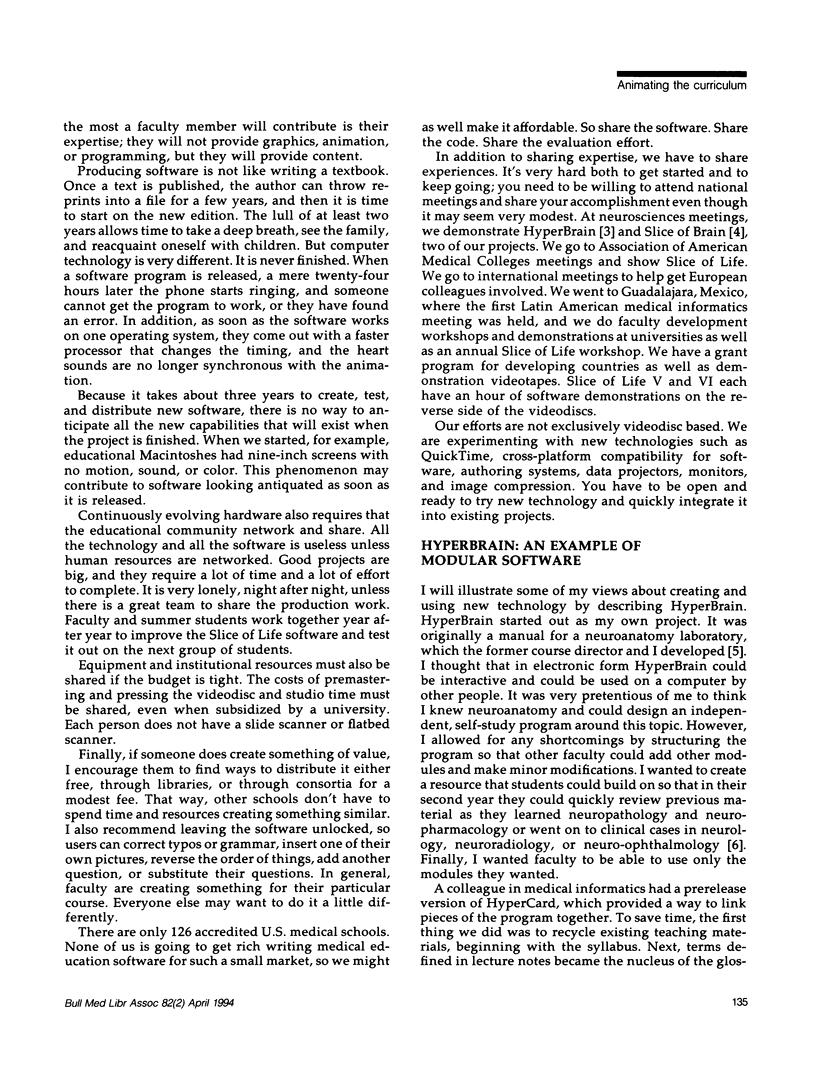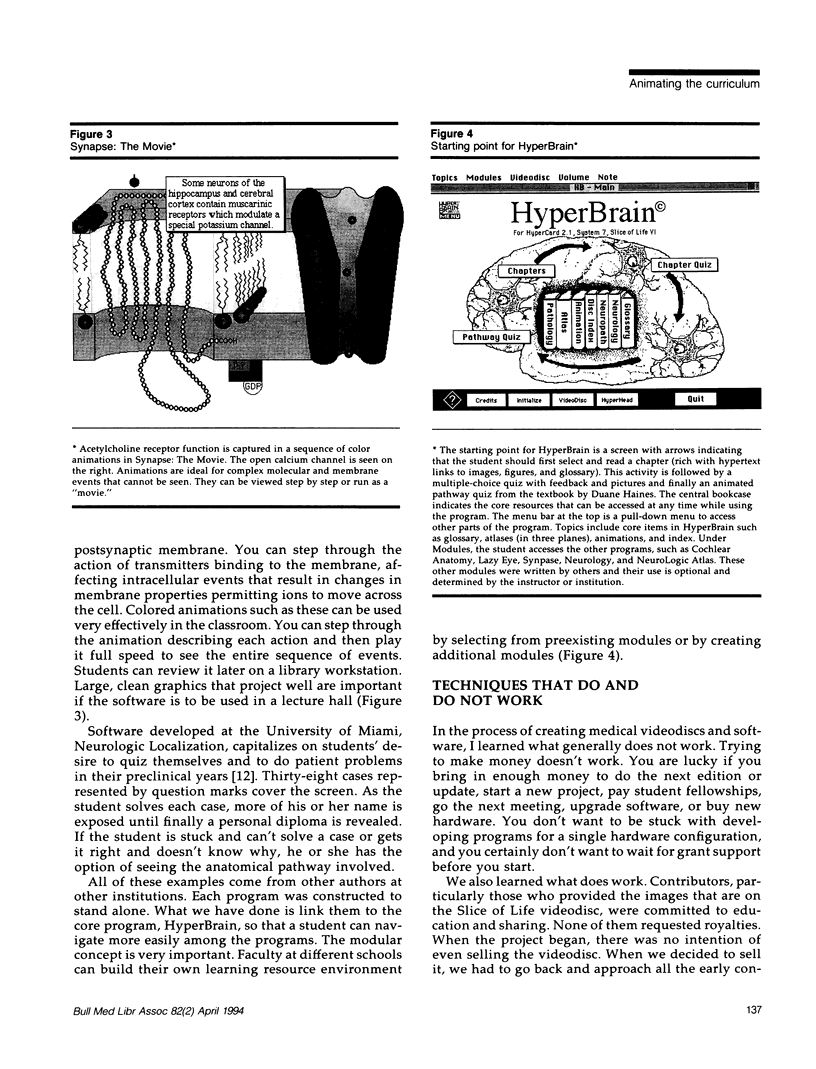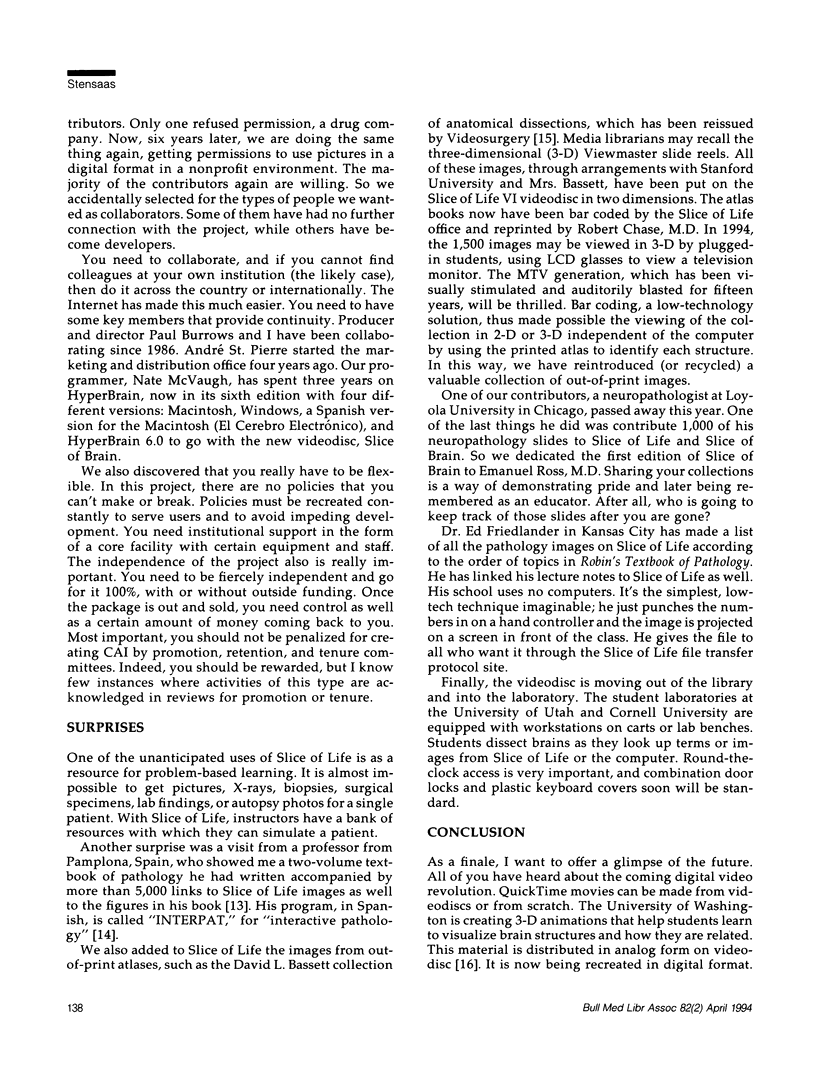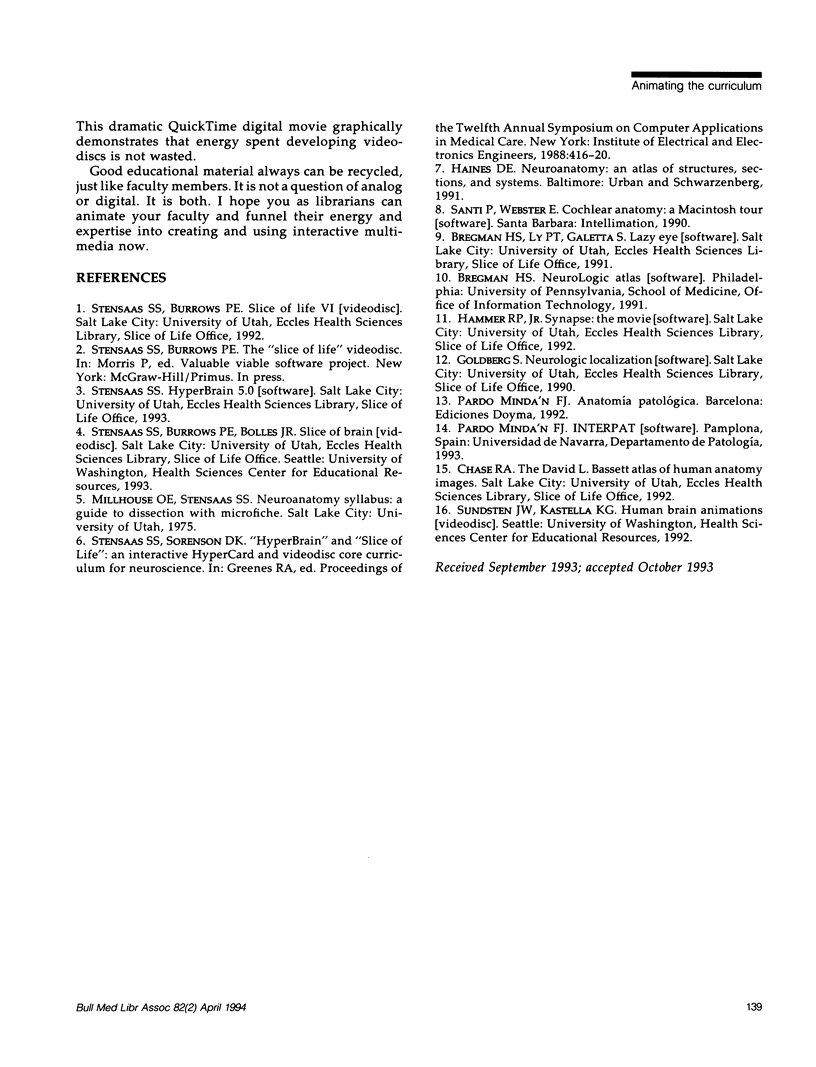Abstract
At many medical schools, the medical library assists faculty in finding and integrating new technology into the classroom, student laboratories, and lecture or small group sessions. Libraries also provide faculty with a place to do development. This paper recounts the author's experience creating software-based educational materials. In the process of creating the Slice of Life videodisc and developing and distributing other medical education software, techniques that do and do not work in producing multimedia for medical education became evident. Use of multimedia features and new modalities not possible with books, rather than development of electronic versions of texts and atlases, should be emphasized. Important human factors include collaboration, continuity, evaluation, and sharing of equipment, software, code, effort, expertise, and experiences. Distribution and technical support also are important activities in which medical libraries can participate.
Full text
PDF